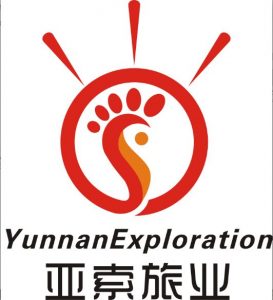
History of Diqing Tibetan Autonomous Prefecture
Located in northwestern Yunnan Province, Diqing Tibetan Autonomous Prefecture forms the southernmost part of the historical Kham region. This strategic area served as:
- The southeastern frontier of the 7th-9th century Tibetan Empire (吐蕃帝国)
- A crucial crossroads along the ancient Tea Horse Road (茶马古道)
- The transition zone between Tibetan plateau and Yunnan lowland cultures
The prefecture’s three counties showcase remarkable diversity:
- Shangri-La City (香格里拉市, formerly Zhongdian 中甸): The political and cultural center
- Dêqên County (德钦县): Home to sacred Meili Snow Mountain (梅里雪山)
- Weixi Lisu Autonomous County (维西傈僳族自治县): A multi-ethnic frontier
From Tibetan Empire to Modern Autonomy
Early History (7th-18th Centuries)
- Tibetan Empire Period: Incorporated as southern frontier territory
- Post-Empire Era: Maintained cultural ties with Central Tibet despite political separation
- Qing Dynasty Control: Gradually came under Chinese administration from 1700s onward
Modern Governance
- 1915-1927: Ruled by Yunnan Clique (云南军阀)
- 1927-1949: Controlled by Governor Long Yun (龙云)
- 1957: Established as autonomous prefecture
- 2001: Zhongdian officially renamed Shangri-La to boost tourism
Cultural and Natural Treasures
The Shangri-La Transformation
The 2001 renaming sparked significant development:
- International recognition through James Hilton’s literary connection
- Tourism infrastructure expansion
- Preservation of Tibetan culture amid modernization
Protected Areas and Landmarks
- Pudacuo National Park (普达措国家公园): Established 2007, covering 1,300 km²
- Dukezong Ancient Town (独克宗古城): 1,000-year-old Tibetan quarter (damaged in 2014 fire)
- Songzanlin Monastery (松赞林寺): Yunnan’s largest Tibetan Buddhist monastery
Contemporary Challenges and Development
The prefecture balances:
- Tourism growth with cultural preservation
- Infrastructure development with environmental protection
- Modernization with traditional livelihoods
Recent initiatives include:
- Post-2014 fire reconstruction of Dukezong
- Sustainable tourism programs
- Ethnic cultural preservation projects
As the only Tibetan autonomous prefecture in Yunnan, Diqing remains a vital bridge between Tibetan and Han Chinese civilizations, offering unique insights into Kham’s historical legacy and contemporary transformation.

 7 Days GolfingTour
7 Days GolfingTour
 8 Days Group Tour
8 Days Group Tour
 8 Days Yunnan Tour
8 Days Yunnan Tour
 7 Days Shangri La Hiking
7 Days Shangri La Hiking
 11 Days Yunnan Tour
11 Days Yunnan Tour
 6 Days Yuanyang Terraces
6 Days Yuanyang Terraces
 11 Days Yunnan Tour
11 Days Yunnan Tour
 8 Days South Yunnan
8 Days South Yunnan
 7 Days Tea Tour
7 Days Tea Tour
 8 Days Muslim Tour
8 Days Muslim Tour
 12 Days Self-Driving
12 Days Self-Driving
 4 Days Haba Climbing
4 Days Haba Climbing
 Tiger Leaping Gorge
Tiger Leaping Gorge
 Stone Forest
Stone Forest
 Yunnan-Tibet
Yunnan-Tibet
 Hani Rice Terraces
Hani Rice Terraces
 Kunming
Kunming
 Lijiang
Lijiang
 Shangri-la
Shangri-la
 Dali
Dali
 XishuangBanna
XishuangBanna
 Honghe
Honghe
 Kunming
Kunming
 Lijiang
Lijiang
 Shangri-la
Shangri-la
 Yuanyang Rice Terraces
Yuanyang Rice Terraces
 Nujiang
Nujiang
 XishuangBanna
XishuangBanna
 Spring City Golf
Spring City Golf
 Snow Mountain Golf
Snow Mountain Golf
 Stone Mountain Golf
Stone Mountain Golf












